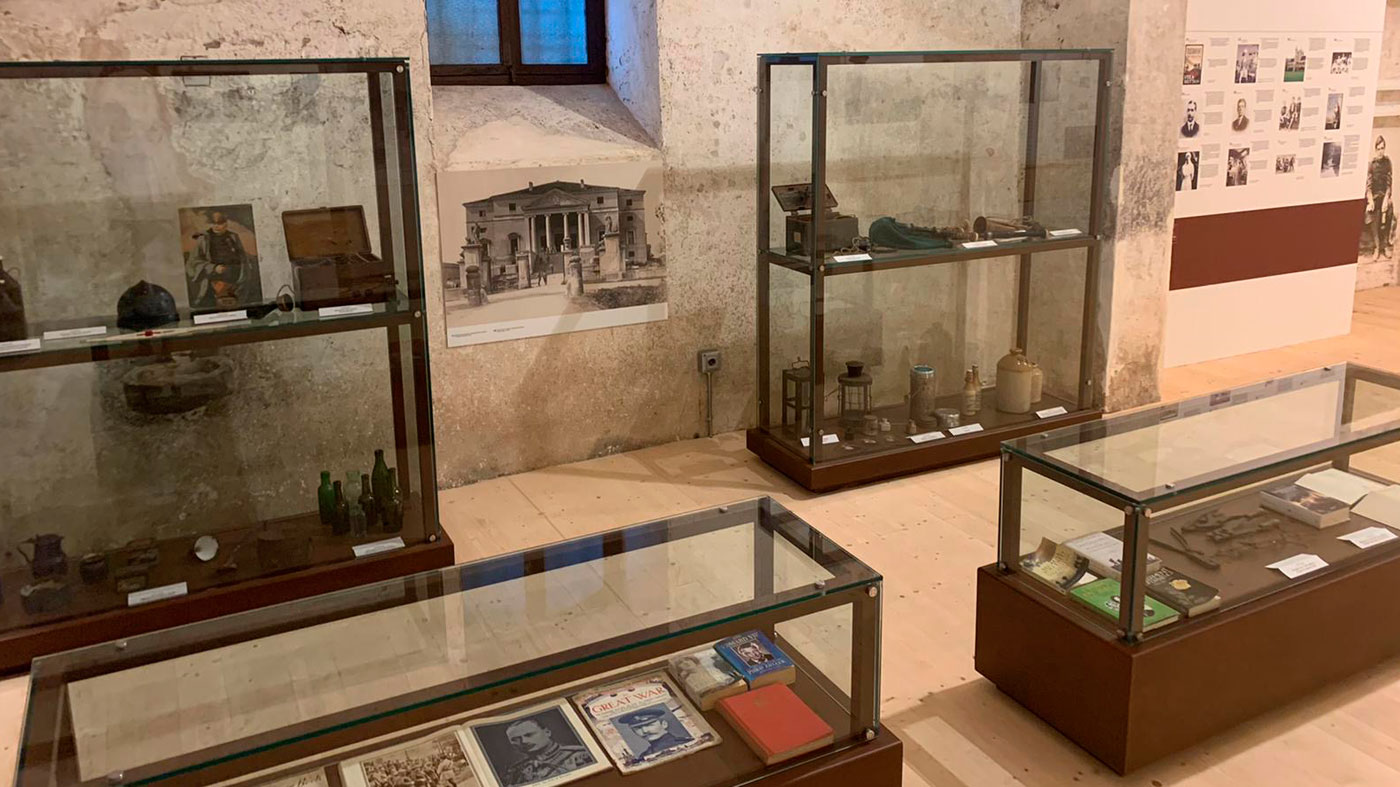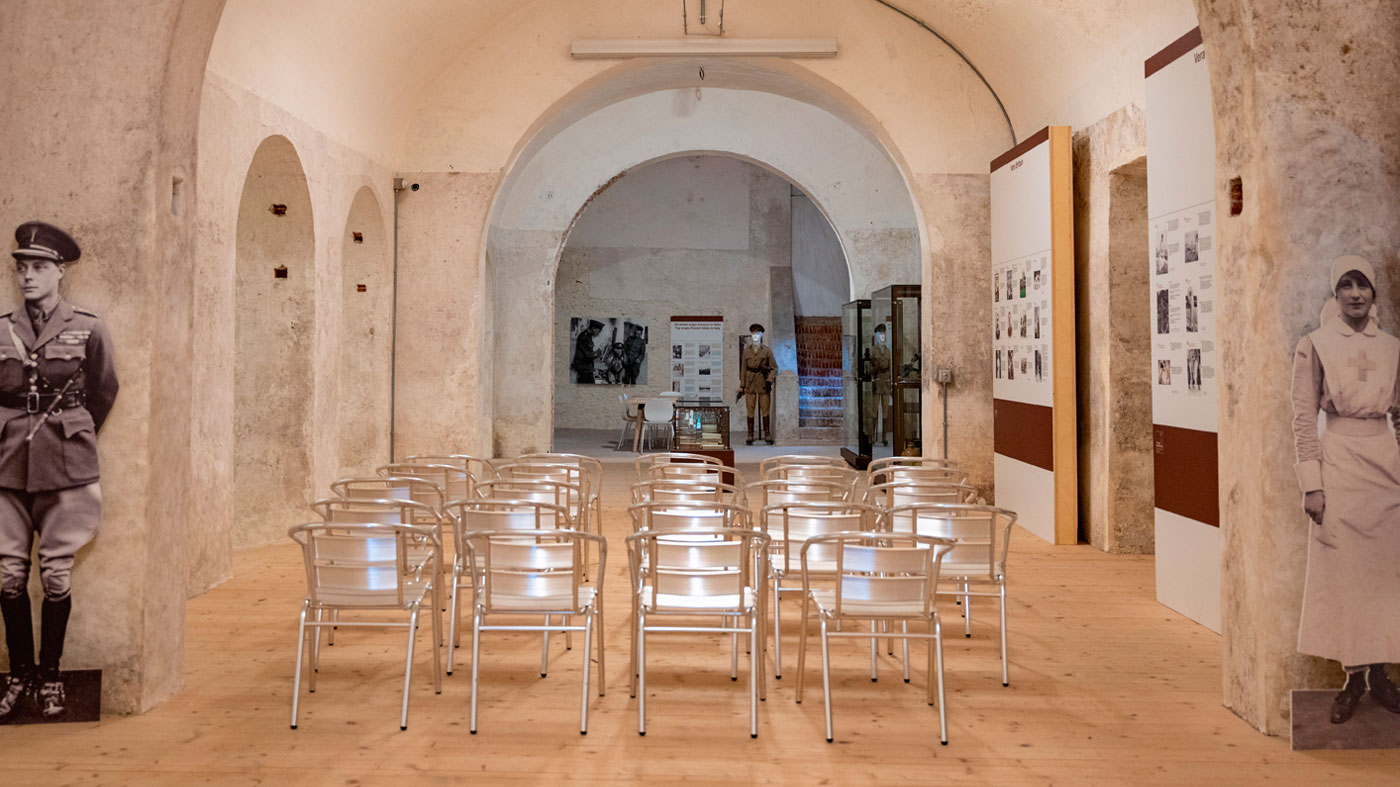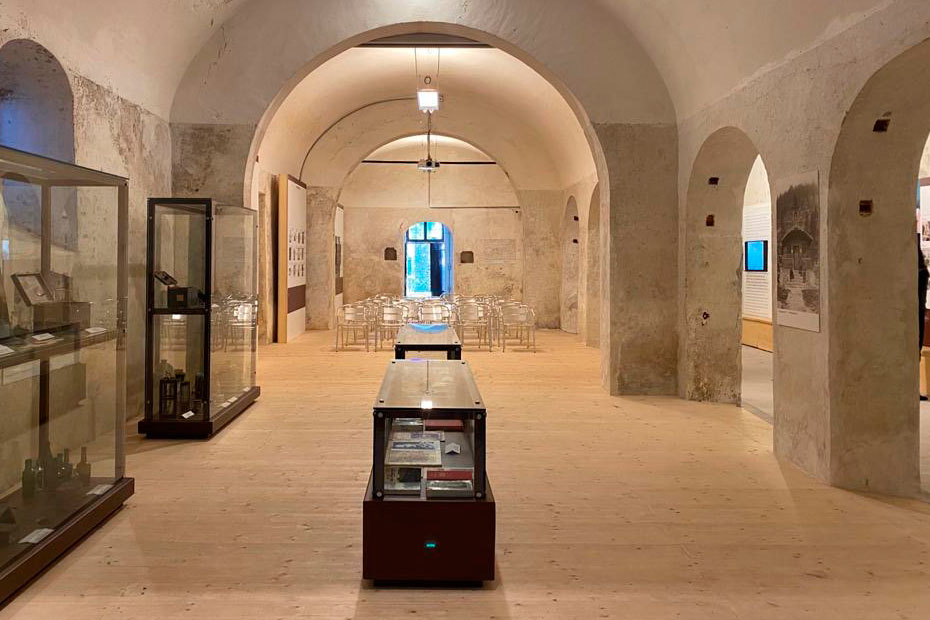
The Museum "La Villa del Principe"
Villa Godi Malinverni - Lugo di Vicenza

"From Flanders to Italy, what a contrast! From a land of mud and muck (...) to a land of warmth, sunshine, and blue skies. From makeshift shacks (...) to a bright Italian villa, covered with climbing plants and cheerful flowers." - Major E.H. Hody
Since 2019, the ancient cellars of the villa have housed a second museum, dedicated to two significant English figures of the Great War, whose fates, for various reasons, became inextricably linked to the history of these territories.
During World War I, many villas and historic residences in Veneto became important military centers. Their location made these villas very safe areas from which commanders could coordinate and plan defensive and offensive military actions against the Austrians. Villa Godi Malinverni was no exception; in fact, due to its strategic position and the grandeur of its interiors, from 1917 to 1918, it was chosen as the headquarters of the British Army.

From here, the British command, led by the Chief of the British General Staff, Lord Caravan, could coordinate the 36,000 men deployed on the front, supporting the Italian army after the disaster of Caporetto in 1917. The British army played a crucial role in supporting the Kingdom of Italy during the final years of the war, moving a considerable number of troops from the trenches of Flanders to the Asiago Plateau.
It was here, at Villa Godi Malinverni, that His Royal Highness, the Prince of Wales, the future King Edward VIII of England and Duke of Windsor, stayed for almost a year to support and coordinate the troops' activities. From this villa, situated on the hills at the foot of the Asiago mountains, the Prince of Wales would rise early to visit military positions and then go to the Rozzampia airfield to fly over the territories. At the time, the Prince had an important role and moved with the entire British command, remaining almost until the end of the war.

The second figure to whom the museum is dedicated is Vera Brittain. An English writer, pacifist, and feminist, Vera Brittain served as a volunteer nurse during World War I. This experience allowed her to witness the horrors of war, which she later documented in her best-selling book Testament of Youth (Generazione Perduta), published in 1933. This pacifist manifesto made her famous.
Throughout her life, she advocated for pacifist and humanitarian causes, never abandoning writing, and became one of the most important women of the 20th century. During the war, she lost her fiance on the Western Front and her brother on the Asiago Plateau, who is now buried in the British cemetery of Granezza (VI). Upon her death in 1970, her ashes were scattered over her brother's grave, following Vera's wishes.

Within the museum, there are relics from the Great War, period publications, infographics, illustrative panels, and videos telling the story of the British army's presence in the Vicenza area, along with the biographies of Edward VIII and Vera Brittain.
Visitors can also explore a reconstruction of a World War I trench and view prints of photographs and sketches made by British soldiers in the upper Vicenza region, preserved in the archives of the Imperial War Museum in London (UK).


